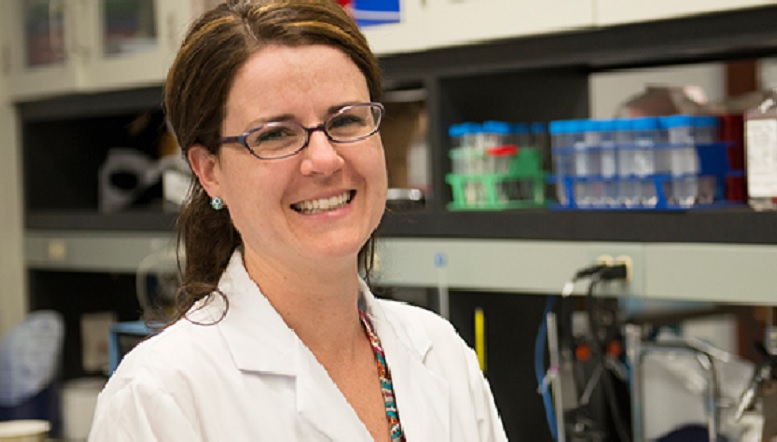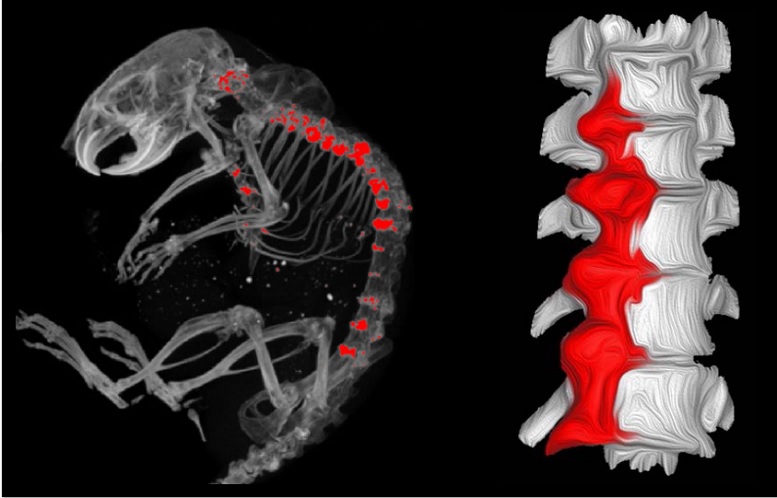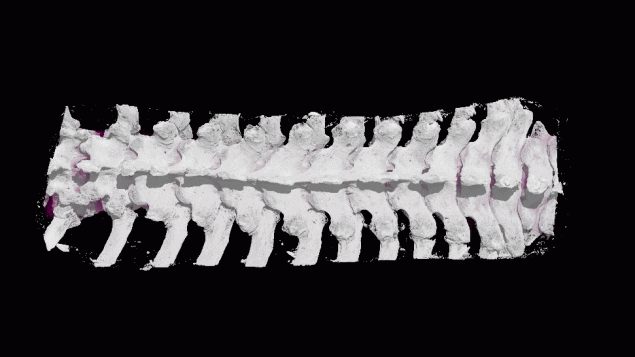If you’re a man over age 50, you have about a one in four chance of developing a particular type of spinal condition resulting in stiffness, reduced movement, and moderate to severe back pain.
Professor Cheryle Séguin (PhD) is assistant professor in the Department of Physiology and Pharmacology at the Schulich School of Medicine and Dentistry and a member of the Bone and Joint Institute at the University of Western Ontario.
ListenThe condition is called DISH- Diffuse idiopathic skeletal hyperostosis.
The condition which affects as many as 25 to 30 percent of men over 50 and a lesser percentage of women, was long thought to be due to bone growth between the spine’s vertebrae.

Professor Cheryle Seguin’s lab brought together experts in several disciplines to make the discovery (UWO
Although a common disease, Seguin notes that little is known about it and there has been little research into it.
The UWO team research was published in two scientific papers; one involving the development of mouse models published in the Journal of Cellular Physiology, entitled, “Loss of ENT1 increases cell proliferation in the annulus fibrosus of the intervertebral disc” (abstract HERE) and the other in the journal, Orthopaedic Research on studies of human cadaver spines entitled, “Ectopic spinal calcification associated with diffuse idiopathic skeletal hyperostosis (DISH): A quantitative micro‐ct analysis” (abstract HERE)

Diffuse Idiopathic Skeletal Hyperostosis (DISH) is a common form of arthritis defined clinically
by the formation of ectopic mineralized material along the spine (“bony bridges”). Images show
three-dimensional representations of a mouse model of DISH (left side) and a human spine with
DISH (right side). Ectopic mineralization in both is highlighted in red (pseudocolored).
Images courtesy of Matthew Veras & Dale Fournier, generated in collaboration with Dr. David
Holdsworth, Western University Bone and Joint Institute.
The Séguin Lab working with an interdisciplinary team at Western discovered that the cause for pain and limited movement are not always bone growth but densely calcified deposits along the soft tissues of ligaments and tendons.
Although it’s most common along the spine, the condition can occur as well in other joints like ankles, hips, knees, shoulders, hands, even ribs, causing pain and reduced range of movement.
Séguin says at present treatment is generally limited to physiotherapy, and surgery in severe cases to remove the bone or calcified material, but that it would likely grow back.
. We now have a clear pathway on where to go from here to better understanding DISH and developing new therapies and treatments.” C Séguin PhD
As they continue research she points out that it is through understanding the disease that treatments can eventually be developed and that this newly discovered research knowledge that it can be calcification of soft tissue is a big step along that path.







For reasons beyond our control, and for an undetermined period of time, our comment section is now closed. However, our social networks remain open to your contributions.